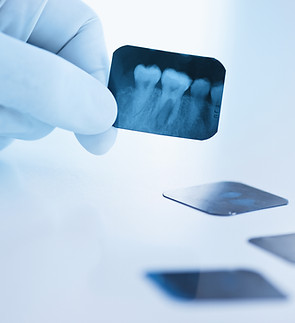X-RAYS
Dental X-rays, also known as dental radiographs, are a specific type of X-ray imaging used to capture images of the teeth, jawbone, and surrounding structures. They are a crucial tool in dental care and play a significant role in diagnosing and monitoring oral health conditions. Dental X-rays help dentists identify and evaluate various dental issues that may not be visible during a routine examination. They provide detailed information about the condition of the teeth, roots, and bone structure, allowing dentists to detect problems early and develop appropriate treatment plans.
Types of Dental XRAYS

Intra-oral X-rays
Bitewing X-rays
These X-rays show the upper and lower back teeth in a single image. They are useful for detecting cavities between teeth, evaluating the fit of dental restorations (e.g., fillings), and assessing bone density.
Periapical X-rays
These X-rays focus on one or two specific teeth, providing a detailed view of the entire tooth, including the root and surrounding bone. They are helpful in diagnosing dental infections, assessing root canal treatments, and evaluating impacted teeth.
OPG X-rays
These X-rays capture a broad view of the entire mouth, including all the teeth, jaws, sinuses, and surrounding structures. They are valuable for assessing the overall dental and skeletal condition, monitoring growth and development, and planning treatments such as orthodontics or dental implants.


3D CBCT Scan
A Dental Cone Beam Computed Tomography (CBCT) scan is an advanced imaging technique used in dentistry to provide three-dimensional images of the oral and maxillofacial region. It offers detailed views of the teeth, jawbone, surrounding structures, and soft tissues, allowing for precise diagnosis and treatment planning.
Dental CBCT scans are particularly useful in complex cases requiring a comprehensive assessment. They provide dentists with detailed information about the position, shape, and orientation of teeth, as well as the density and quality of the jawbone. This information aids in planning dental implant placement, evaluating impacted teeth, diagnosing jaw disorders, assessing root canal treatments, and identifying other oral and maxillofacial conditions.





